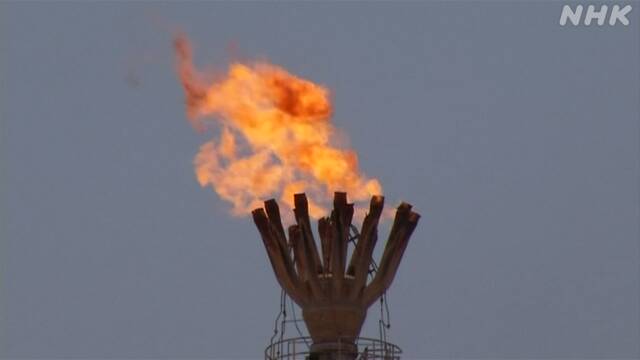OPEC Plus, which is formed by major oil-producing countries such as Saudi Arabia and Russia, will hold a meeting on the evening of the 4th to decide the future production of crude oil in Japan time. The focus will be on whether to cut further production to support the downward trend in oil prices.
OPEC = Organization of Petroleum Exporting Countries led by Saudi Arabia and OPEC Plus, which is formed by non-member oil-producing countries such as Russia, will hold a ministerial meeting in Vienna on the evening of the 4th, Japan time, on the evening of the 4th to discuss the future production of crude oil.
In October last year, OPEC Plus decided to cut production by 10 million barrels per day in an attempt to stem the decline in crude oil prices due to concerns about a global economic slowdown.
Furthermore, in April, some countries, such as Saudi Arabia, announced voluntary production cuts of 1.200 million barrels per day in an attempt to stem the decline in crude oil prices.
However, crude oil prices have continued to decline since then.
The focus of this meeting will be on whether to cut additional production to support oil prices.
However, it is reported that Saudi Arabia is strongly opposed to Russia's continued exports in order to earn foreign currency income due to economic sanctions such as an embargo on crude oil by the West regarding crude oil production.
Whether Saudi Arabia and Russia, which lead OPEC Plus, can decide on crude oil production policies in lockstep, and the content of the decision will be closely watched because it will affect the international crude oil market.
OPEC Plus Crude Oil Production Adjustment History
OPEC = Organization of Petroleum Exporting Countries led by Saudi Arabia and non-member oil-producing countries such as Russia have formed a group called OPEC Plus to adjust crude oil production while monitoring trends in crude oil demand.
International crude oil prices soared temporarily against the backdrop of Russia's invasion of Ukraine in February last year.
WTI futures prices in the New York crude oil market, an indicator of international crude oil trading, exceeded 2 barrel = $3 in March last year, reaching a 1-year and 130-month high.
However, since then, oil prices have been on a downward trend due to concerns that inflation in Europe and the United States and rapid interest rate hikes will slow the global economy.
Against this backdrop, in October last year, OPEC Plus drastically reversed its policy and decided to cut production by 13 million barrels per day.
We are still maintaining this production reduction plan.
However, the downward trend in crude oil prices did not stop even after that, and in March, the futures price of WTI fell to the level of 8 barrel = $10 due to a series of bank failures in the United States.
In April, some oil-producing countries, such as Saudi Arabia, announced voluntary production cuts of 1.200 million barrels per day.
WTI futures prices temporarily exceeded $3 = 1 barrel in response to the unexpected announcement of voluntary production cuts, but concerns about a slowdown in the global economy persist, and crude oil prices are on a downward trend again due to the view that crude oil demand will fall.

